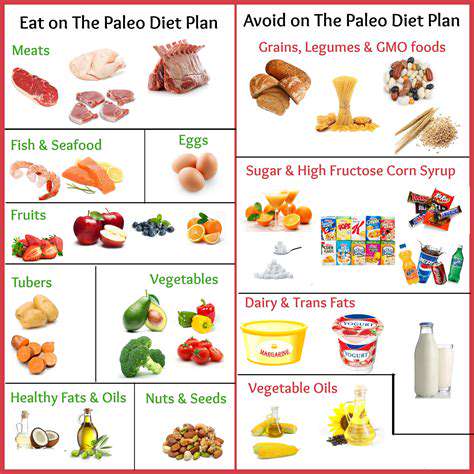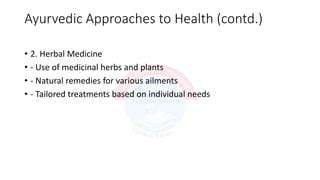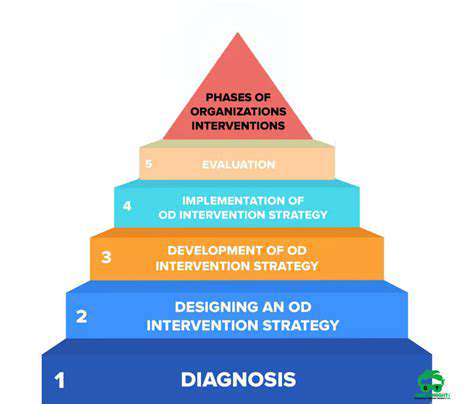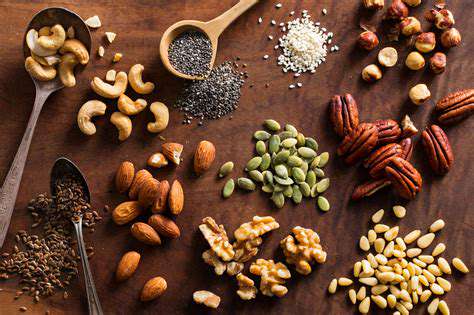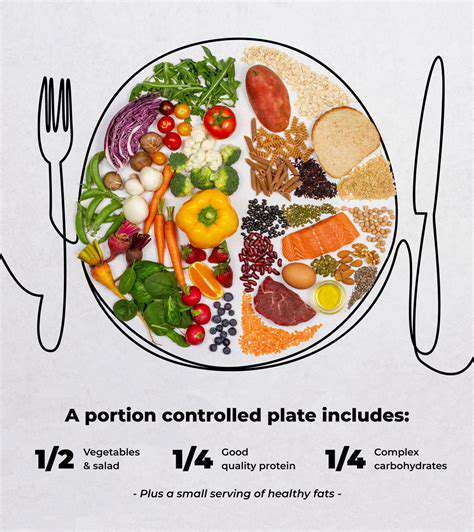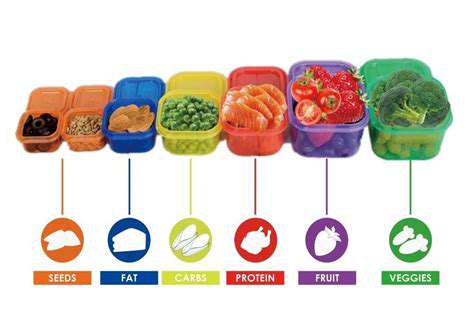Dairy Free Life: Exploring Alternatives
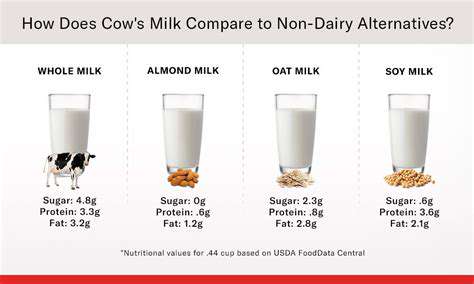
Exploring Plant-Based Alternatives
The dairy industry has long dominated the food landscape, but a growing awareness of environmental concerns and health considerations has spurred a surge in interest in plant-based alternatives. These alternatives, from almond milk to soy milk and oat milk, offer a range of nutritional profiles and culinary possibilities, appealing to individuals seeking diverse dietary options.
Many plant-based milks are fortified with vitamins and minerals, often mimicking the nutritional content of cow's milk. This makes them a viable option for those seeking to reduce their dairy intake or adopt a vegan lifestyle. Furthermore, the production of plant-based milks often has a lower environmental footprint compared to traditional dairy farming.
The Nutritional Value of Different Dairy Alternatives
Different plant-based milk alternatives vary significantly in their nutritional content. Almond milk, for example, is generally lower in protein compared to soy milk, while oat milk often boasts a higher fiber content. Understanding the nutritional makeup of each alternative is crucial for tailoring a balanced diet.
Careful consideration of the specific nutritional needs of individuals is essential when selecting a plant-based milk alternative. Individuals with specific dietary restrictions or requirements should consult with a healthcare professional or registered dietitian to ensure they are meeting their nutritional needs.
Environmental Impact of Dairy Production
The environmental impact of dairy farming is a critical factor for many consumers. Traditional dairy farming can lead to significant greenhouse gas emissions, deforestation, and water pollution. The production of plant-based alternatives, while not without its environmental footprint, often presents a more sustainable option.
The reduced land usage and water consumption associated with plant-based milk production contribute to a smaller environmental impact compared to conventional dairy farming. This is a crucial consideration for individuals concerned about the environmental impact of their food choices.
Culinary Versatility and Applications
Plant-based milks have become increasingly versatile in the culinary world, transcending their use as a beverage. They are now frequently incorporated into various recipes, from baking and cooking to creating creamy sauces and dressings.
From smoothies and lattes to cooking and baking, the possibilities are endless. Their ability to complement a variety of dishes adds a new dimension to culinary creativity and allows for the exploration of diverse flavors and textures.
Health Benefits and Considerations
The potential health benefits associated with plant-based milks are a subject of ongoing research and discussion. Some studies suggest potential links between consuming plant-based milks and reduced risks of certain health conditions.
However, it's crucial to remember that individual responses to different foods can vary. Consumers should be mindful of potential allergies or sensitivities to specific plant-based milk ingredients and should always consult with a healthcare professional if they have any concerns.
Dairy-Free Cheese: From Creamy to Sharp
Exploring the World of Dairy-Free Cheeses
Dairy-free cheese alternatives have come a long way, offering a wide variety of textures and flavors to suit diverse palates. From mild and creamy to sharp and tangy, these alternatives provide a satisfying substitute for traditional cheese in countless dishes. This exploration delves into the diverse range of dairy-free cheeses available, highlighting their versatility and the unique characteristics that make them appealing to those with dietary restrictions or simply seeking a delicious dairy-free option.
The advent of plant-based milks and innovative ingredients has fueled the creation of cheeses that mimic the taste, texture, and even melting properties of their dairy counterparts. This allows for a seamless transition in recipes, without sacrificing flavor or enjoyment.
Nutritional Profiles and Benefits
Many dairy-free cheeses are packed with nutrients, offering a healthy alternative to traditional cheese. They often contain vitamins, minerals, and protein, making them a valuable addition to a balanced diet. For example, some plant-based cheeses are fortified with calcium to maintain bone health, a crucial aspect of a balanced diet.
Furthermore, many dairy-free cheese alternatives are lower in saturated fat compared to their dairy counterparts, contributing to a potentially healthier dietary choice for individuals with specific dietary needs.
Types of Dairy-Free Cheese
The variety of dairy-free cheese is truly impressive, encompassing various textures and flavors. There are cashew-based cheeses, offering a rich and creamy mouthfeel, and coconut-based cheeses that deliver a unique tropical note. Other options include those made from soy, almonds, and other plant-based ingredients.
Each type brings its own distinct characteristic to the table, allowing for a diverse range of culinary applications.
Using Dairy-Free Cheese in Recipes
Dairy-free cheese seamlessly integrates into a wide array of recipes. From melting over pasta dishes to adding a sharp flavor to salads, the versatility of these products is remarkable. They can be used in grilled cheese sandwiches, pizza toppings, or as a substitute for traditional cheese in any recipe requiring cheese.
Experimentation is key! The unique flavors and textures of different dairy-free cheeses can elevate dishes in unexpected ways, opening up a world of culinary possibilities.
Choosing the Right Dairy-Free Cheese
When selecting dairy-free cheese, consider the specific recipe and desired outcome. A creamy cashew cheese might be perfect for a fondue, while a firmer, sharper alternative might be ideal for a pizza topping. Reading labels and understanding the ingredients is essential for ensuring the product aligns with individual dietary needs and preferences.
The market offers a vast selection, so exploring different brands and varieties is often the best approach to discovering personal favorites.
Storage and Shelf Life
Proper storage is crucial for maintaining the quality and freshness of dairy-free cheese. Most varieties should be stored in the refrigerator, following the specific instructions provided by the manufacturer. Understanding the shelf life of each type will help maximize its usability and prevent waste.
Paying close attention to packaging instructions can help prevent spoilage and ensure the best possible eating experience.
Allergy Considerations and Substitutions
Individuals with specific allergies or dietary restrictions should carefully review the ingredients list of any dairy-free cheese. Some products may contain nuts, soy, or other allergens. Always check labels to ensure the product aligns with individual needs. If needed, there are numerous resources available to help with finding alternative cheeses.
Knowing the potential allergens and substitutions beforehand allows for safe and delicious culinary adventures.
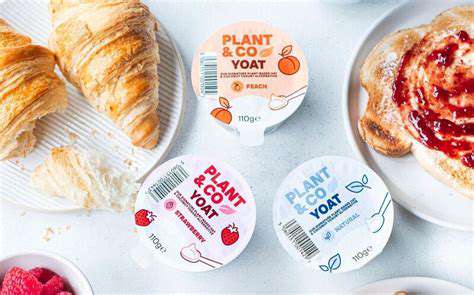
Beyond the Basics: Exploring Dairy-Free Recipes
Beyond the Basic Dairy-Free Breakfast
Dairy-free diets are becoming increasingly popular, and for good reason. Many people find that eliminating dairy products can improve their health and well-being. However, transitioning to a dairy-free lifestyle can seem daunting, especially when it comes to breakfast. Fortunately, there are many delicious and nutritious dairy-free breakfast options available, ranging from simple oatmeal made with plant-based milk to elaborate smoothie bowls packed with protein and healthy fats. This exploration of dairy-free breakfasts will provide you with inspiration and practical tips for creating satisfying and wholesome meals.
One of the most important aspects of a successful dairy-free breakfast is choosing the right plant-based milk. A variety of options are available, including almond milk, soy milk, oat milk, and coconut milk, each with its own unique flavor profile and nutritional content. Experimenting with different types of milk can help you discover your preferences and find the perfect match for your taste buds.
Savoring Dairy-Free Lunches
Lunchtime offers a fantastic opportunity to showcase the versatility of dairy-free cuisine. From vibrant salads bursting with fresh vegetables and flavorful dressings to hearty soups packed with protein and fiber, the possibilities are endless. Dairy-free lunches can be just as satisfying and nutritious as their dairy-laden counterparts. This section will delve into the world of dairy-free lunch options, showcasing creative and delicious recipes to keep you energized and satisfied throughout the afternoon.
A key element of dairy-free lunches is the use of healthy fats and protein sources. Avocados, nuts, seeds, and legumes are excellent choices to incorporate into your meals. These ingredients not only add flavor and texture but also provide essential nutrients that support overall health and well-being. Exploring different combinations of these ingredients can lead to a truly diverse and exciting lunch experience.
Discovering Dairy-Free Dinners
Dairy-free dinners provide a fantastic opportunity to explore a wide range of flavors and textures. From flavorful stir-fries to hearty stews, the possibilities are endless. This section will delve into the world of dairy-free dinners, showcasing creative and delicious recipes to keep you satisfied and energized throughout the evening. Discovering new and exciting dairy-free dinner recipes can open up a whole new world of culinary possibilities.
In addition to exploring diverse recipes, this section will also provide practical tips and tricks for successful dairy-free cooking. Understanding how to substitute dairy products and maintain the desired flavor and texture of dishes is crucial. These tips will empower you to confidently create delicious and nutritious dairy-free meals at home.
Beyond the Plate: Dairy-Free Treats and Snacks
A dairy-free lifestyle doesn't mean sacrificing your sweet tooth! This section will explore the world of dairy-free desserts and snacks, highlighting creative and delicious alternatives to traditional treats. From decadent chocolate mousse made with plant-based milk to crispy cookies and energy balls packed with wholesome ingredients, there's a wide array of options to satisfy your cravings without compromising your dietary choices.
This exploration will also cover the importance of reading labels carefully when purchasing dairy-free products. Understanding hidden sources of dairy and the presence of alternative ingredients is crucial for maintaining a consistent dairy-free diet. Ultimately, this section aims to empower you to enjoy a diverse range of dairy-free treats while staying true to your dietary goals.

